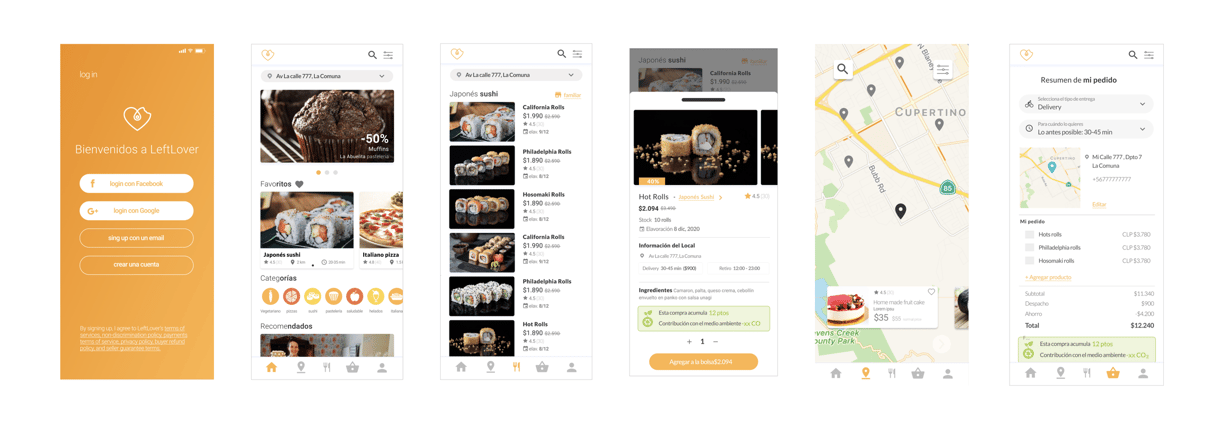Empowering responsible consumption and fighting food waste
Year: 2020 - 5 months
Role: UX Researcher and Designer
Skills: User Research / User Testing / Wireframing / Prototyping / Presentation
Software: Figma / Maze / Miro
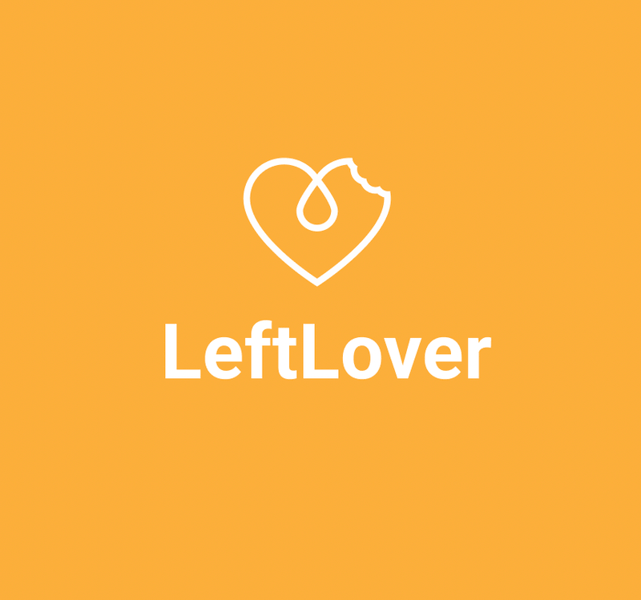

It’s estimated that of the greenhouse gases produced by the global food - system, 10% is directly linked to food losses and waste (IPCC Intergovernmental Panel on Climate Change Report).
Globally, one-third of the food produced for human consumption is lost or wasted throughout the food chain, equivalent to 1.3 billion tons per year. (Food and Agriculture Organization of the United Nations FAO).
In Chile, more than 3.7 billion kilos of food are thrown away every year (Ministry of Agriculture, Sept. 2019).
In Chile, 63.3 kilograms of bread are wasted per family per year (Boletín de Pérdidas y Desperdicios de Alimentos)
Problem Overview
VISION
To become a benchmark in the fight against food waste.
MISSION
To reduce food waste in Chile by raising awareness about the efficient use of food and educating people on their role and responsibility in minimizing negative environmental impacts.
PROPOSAL
To build a thriving community that bridges consumers and local businesses by offering unsold or near-expiration products at reduced prices. This initiative ensures access to affordable, high-quality food while actively reducing waste and fostering a culture of responsible and sustainable consumption.
Navigating food waste universe and opportunities
We initiated both secondary and primary research efforts to gain a comprehensive understanding of the food waste landscape. Our approach included a thorough benchmark analysis of international service proposals and experiences related to food waste. During this exploration, we discovered a unique gap – unlike many other nations, Chile lacked a national platform for the sale of local food surplus.
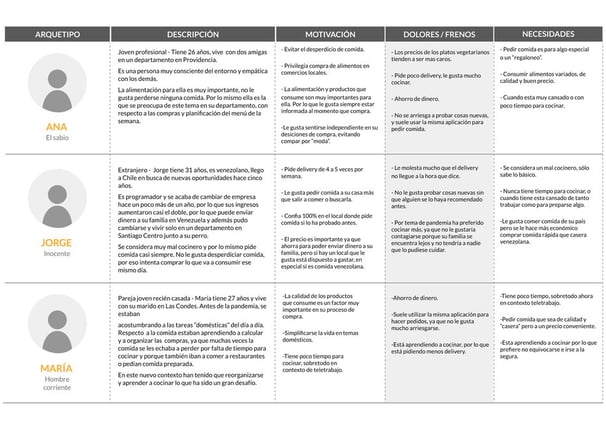


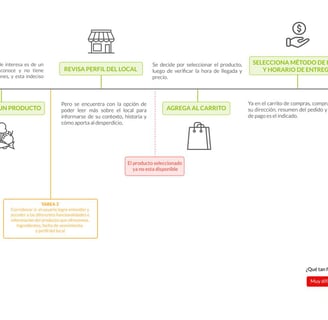
Identifying our target audience and purchasing behavior
We conducted an ethnographic study targeting a group we called "Leftovers," using interviews and surveys to understand behaviors and perceptions around surplus food. This revealed two key audiences: SME owners and consumers.
SME Owners: Local food businesses often face surplus issues, especially those selling fresh daily products, leaving them with unsold items in perfect condition.
Consumers: Predominantly immigrants in Santiago, apartment-sharing friends, and young newlyweds.
These insights guided us to test our concept further.
Personas
System mapping
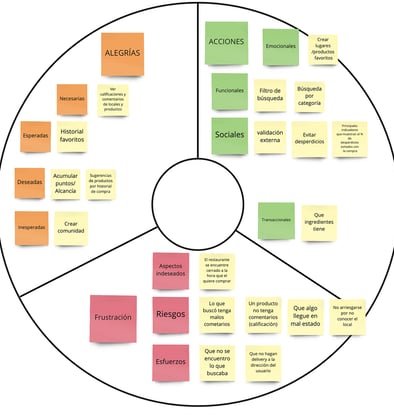

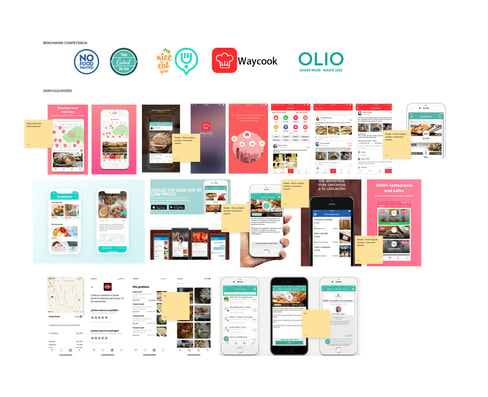

Value mapping
Defining the platform structure and user Flow
With all the gathered insights, we translated our research into a comprehensive system map, outlining every layer of the platform—from user interactions to backend operations and potential failure points. This blueprint provided a clear structural foundation, allowing us to anticipate challenges and refine the user journey before moving into the wireframing stage.
Designing and testing a digital platform
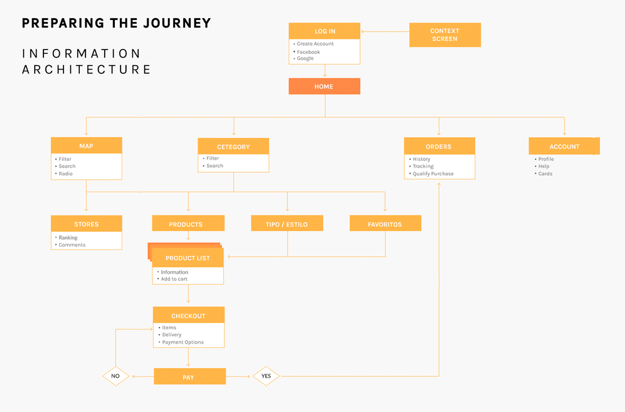

Using insights from the discovery phase, we developed a model to address key needs. LEFTLOVER connects consumers and local businesses via an app, enabling the sale of products nearing expiration. This fosters access to affordable, quality food, reduces waste, and promotes responsible consumption.
We designed the information architecture and initial wireframes with both user groups—consumers and business owners—in mind. Based on testing and feedback, we implemented key improvements:
Consumer-Owner Connection: Enhanced store profiles to include more business details, fostering emotional connections and familiarity with consumers.
Product Details: Required stores to provide product-specific information such as ingredients, production dates, and dietary labels (e.g., vegetarian, vegan, gluten-free).
Gamification: Introduced a points system to reward sustainable purchases, increasing awareness of their positive environmental impact while promoting responsible consumption.
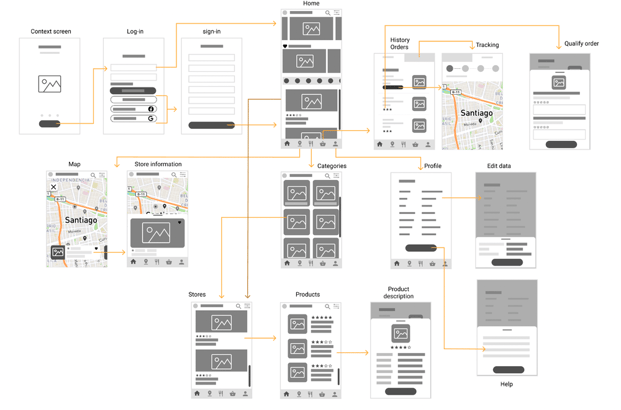

The two main testing sessions that helped us iterate and refine the user experience were:
Tree Testing: Validated the information architecture, ensuring intuitive navigation and leading to key improvements in category structure and user flow.
Maze User Testing: Assessed the buying flow and user perception of purchasing surplus food, helping us identify friction points and optimize interactions for a seamless experience.
Prototyping
